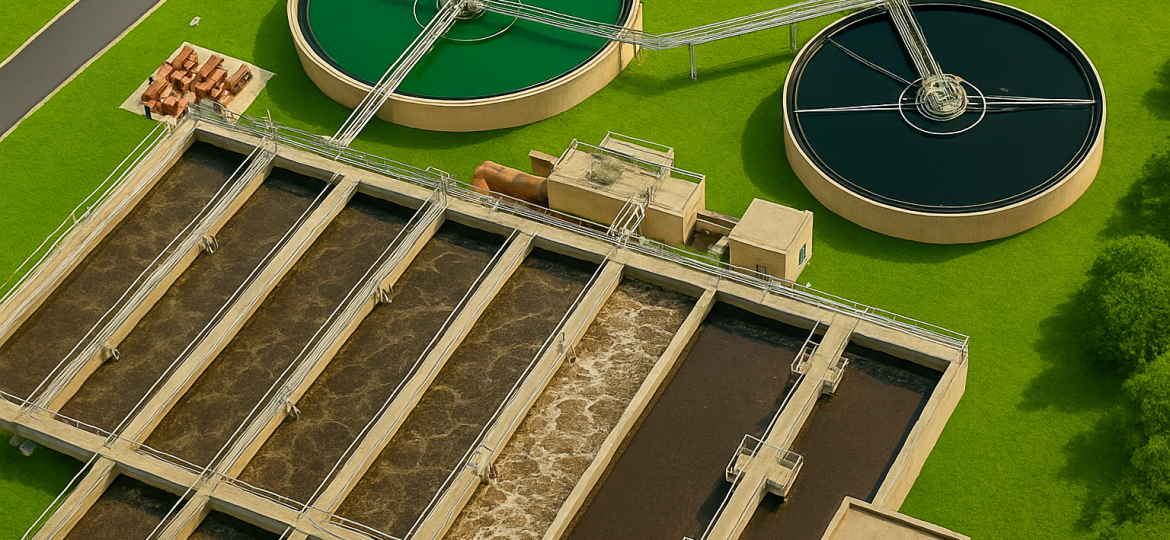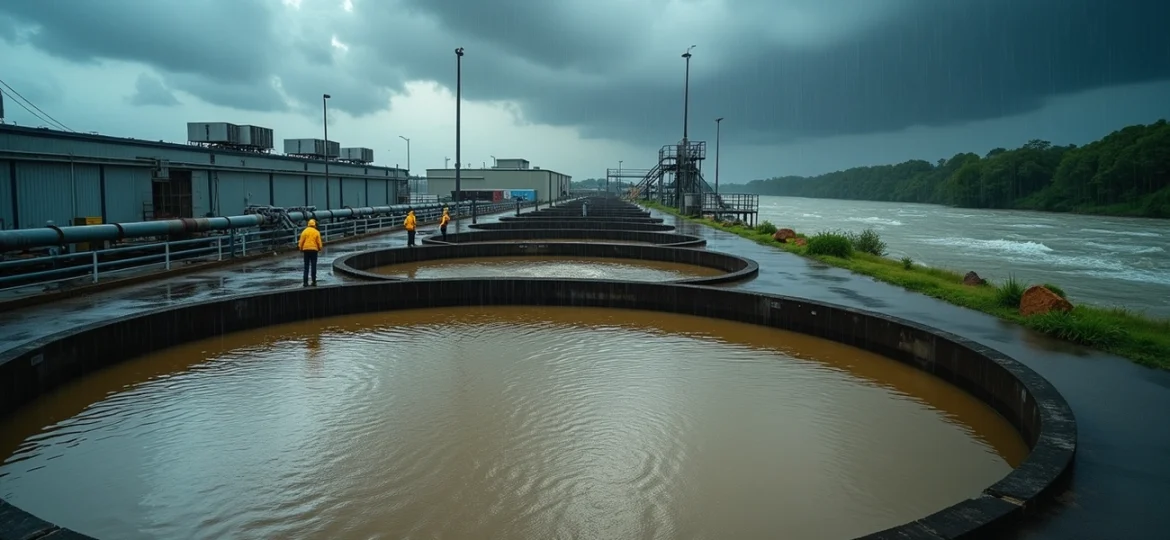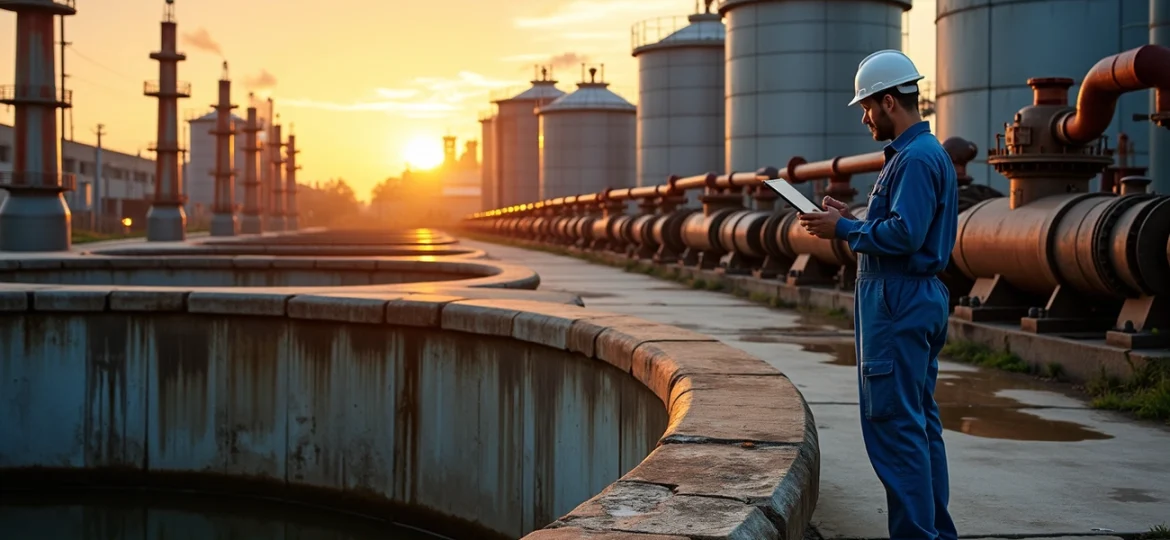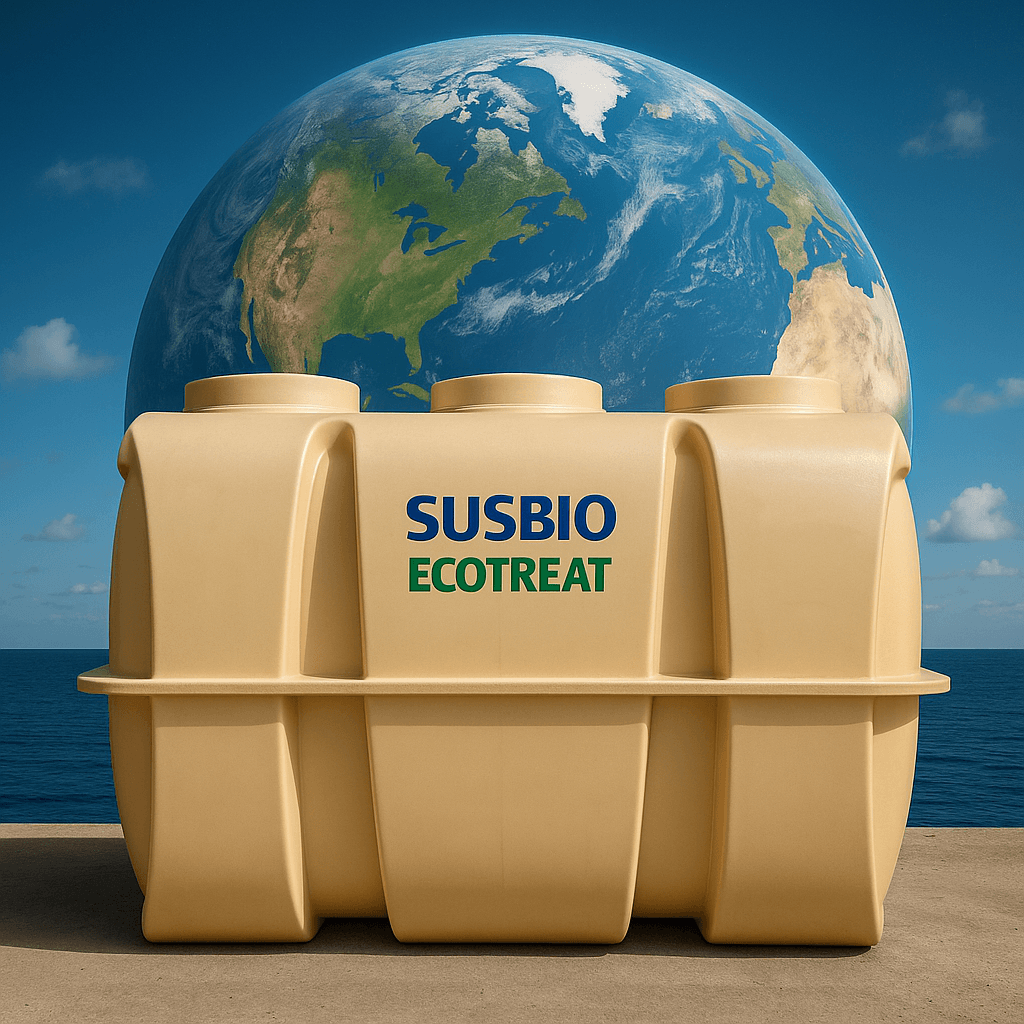In today’s world, environmental sustainability is no longer a luxury but a necessity. Effective wastewater management plays a critical role in maintaining this balance, and sewage treatment is at the heart of this effort. Whether it’s a residential community, commercial space, or industrial complex, treating sewage properly is vital for protecting our water resources, public health, and the overall environment.
What Is Sewage Treatment and Why Is It Important?
Sewage treatment is the process of removing contaminants, pollutants, and harmful microorganisms from wastewater. Untreated sewage can carry diseases, pollute waterways, and damage ecosystems. By treating this wastewater before it is released into the environment, we ensure that clean, usable water is preserved, and ecosystems remain intact.
Sewage contains organic and inorganic materials that need to be broken down or removed to ensure safe disposal or reuse. Without proper treatment, untreated sewage can lead to the contamination of drinking water sources, harm aquatic life, and contribute to climate change through methane emissions.
The Role of Advanced Sewage Treatment
Traditional sewage treatment systems have served us well, but the growing need for efficiency, cost savings, and environmental responsibility has led to innovations in advanced sewage treatment technologies. These modern systems are revolutionizing wastewater management by offering more efficient, sustainable, and automated solutions.
Advanced sewage treatment utilizes a combination of biological, chemical, and physical processes to treat wastewater more effectively. New technologies incorporate automated controls, real-time monitoring, and energy-efficient designs that require less human intervention and lower operational costs.
Some key features of advanced sewage treatment systems include:
Dual Treatment Process: Combining aerobic and anaerobic processes within one system allows for more thorough purification of wastewater. The aerobic process uses oxygen to break down organic matter, while the anaerobic process works without oxygen, breaking down complex pollutants.
Energy Efficiency: Advanced systems are designed to reduce energy consumption by using renewable energy sources, such as solar power, or by optimizing the energy use of the system itself. These systems significantly reduce carbon footprints and operating costs.
Compact and Modular Design: Many modern sewage treatment plants are packaged sewage treatment plants that come in compact, pre-fabricated designs, making them easy to transport, install, and maintain. They are ideal for developments with limited space, like urban housing complexes or small commercial buildings.
Reusability of Treated Water: Advanced treatment plants also ensure that treated water is clean enough for reuse, making it suitable for irrigation, industrial use, or even flushing systems. This helps reduce water wastage and promote water conservation.
How Sewage Purification Projects Enhance the Sustainability of Modern Real Estate Developments
Sewage purification plays a crucial role in enhancing the sustainability of modern real estate developments. With urban populations growing and environmental concerns increasing, real estate developers are turning to advanced sewage treatment solutions to reduce the environmental impact of their projects. Here’s how sewage purification projects contribute to a more sustainable future for real estate developments:
1. Water Conservation and Reuse
One of the most significant benefits of sewage purification projects is their ability to treat and recycle wastewater. In modern real estate developments, water is often in short supply, especially in urban areas. Advanced sewage treatment systems help reclaim treated water for non-potable uses like landscape irrigation, cooling systems, and toilet flushing. This water reuse significantly reduces the demand on municipal water supplies, making buildings more water-efficient.
Example: Many eco-friendly developments use treated sewage water to irrigate green spaces or to maintain landscaping, which helps conserve freshwater resources. By doing so, they create self-sustaining water systems that reduce their dependence on external water sources.
2. Reduction of Environmental Footprint
Sewage purification projects contribute to reducing the environmental footprint of real estate developments by minimizing harmful discharges into water bodies. Instead of releasing untreated sewage into rivers or oceans, advanced treatment technologies like Membrane Bioreactors (MBR) and activated sludge systems provide high-quality effluent that meets environmental standards, ensuring minimal environmental damage.
Example: A green building that incorporates sewage treatment on-site ensures that wastewater is treated effectively and responsibly. This proactive approach minimizes pollution and helps maintain local ecosystems.
3. Energy Efficiency
Modern sewage treatment plants are designed to be energy-efficient, with systems optimized to reduce energy consumption. Many advanced sewage treatment technologies, such as anaerobic digestion, also generate biogas, which can be used for energy production. This process not only reduces the carbon footprint of real estate developments but also helps make them more energy self-sufficient.
Example: Developers can integrate biogas recovery systems in their sewage treatment plants, which can then be used to power heating systems, lighting, or even feed back into the grid, making the development more energy-efficient.
4. Compliance with Environmental Regulations
Governments and environmental agencies worldwide are tightening regulations surrounding water treatment and wastewater management. By implementing advanced sewage purification technologies, developers can ensure that their projects comply with both local and international regulations. This helps avoid penalties, ensures the long-term sustainability of the development, and positions it as a green development.
Example: Real estate developments that incorporate on-site sewage treatment systems often exceed regulatory standards, setting them apart in the competitive market of environmentally-conscious tenants and buyers.
5. Cost Savings and ROI
Although installing sewage treatment systems can require an upfront investment, they often lead to significant cost savings in the long term. By reducing dependency on external utilities and water sources, real estate developers can lower operational costs for tenants, making the property more attractive. Additionally, the use of advanced sewage purification technologies often results in government incentives, tax benefits, or rebates for sustainable building practices.
Example: Developers can benefit from reduced water and sewage bills by implementing on-site treatment systems, providing a strong return on investment (ROI) over the building’s lifecycle.
6. Enhancing Property Value and Marketability
Sustainability is increasingly a major consideration for buyers and renters. Real estate developments with integrated sewage purification systems and eco-friendly features often see an increase in property value and demand. Green buildings are recognized for their environmental responsibility, making them more attractive to eco-conscious investors, tenants, and buyers.
Example: Properties with sustainable sewage treatment systems can be marketed as environmentally responsible, improving their marketability and attracting a premium price.
7. Long-term Viability and Resilience
As cities face increasing pressure from climate change, water scarcity, and pollution, developers must plan for long-term resilience. Sewage purification projects provide solutions that ensure developments are future-proof and able to meet the challenges of tomorrow. By adopting sustainable technologies today, developers can ensure that their properties are equipped to handle environmental pressures for years to come.
Example: Sustainable urban planning projects that incorporate decentralized sewage treatment solutions are better equipped to withstand water shortages or changes in water quality, making them more resilient to future challenges.
Conclusion: Revolutionizing Real Estate with Sewage Purification Projects
Sewage purification projects are no longer just a regulatory requirement; they have become essential components of sustainable real estate development. By reducing water consumption, minimizing environmental impact, saving energy, and improving the value of properties, sewage treatment technologies contribute to the long-term sustainability and success of real estate projects. As developers embrace these advanced solutions, they play a key role in shaping green cities and sustainable communities that are better equipped to thrive in an eco-conscious world.
Why Advanced Sewage Treatment Is Revolutionizing the Industry
The introduction of advanced sewage treatment systems has revolutionized the wastewater management industry in several ways:
- Increased Efficiency: Advanced technologies speed up the treatment process while improving the quality of treated water.
- Reduced Environmental Impact: These systems are designed to reduce pollution and promote sustainability, ensuring a greener future.
- Cost Savings: Automated systems and energy-efficient designs lower operational costs over time, making them a cost-effective option for developers.
- Scalability and Flexibility: These systems can be customized to fit the needs of any development, whether it’s a small residential building or a large industrial facility.
Transform Your Real Estate Project with Advanced Sewage Treatment Solutions
Incorporating advanced sewage treatment solutions in real estate projects offers significant environmental, economic, and operational benefits. Real-world examples demonstrate how these technologies can transform developments into sustainable, high-value assets.
Practical Examples of Sewage Management Projects in Real Estate
- Shougang Park, Beijing, China
- Sewage Solution: Membrane bioreactors and constructed wetlands treat wastewater on-site.
- Impact: Reduced water consumption and increased property value through sustainable practices.
- Masdar City, UAE
- Sewage Solution: Decentralized sewage treatment with membrane filtration and anaerobic digestion.
- Impact: Significant reduction in water and energy use, positioning the project as a model for future developments.
- Brooklyn Navy Yard, New York, USA
- Sewage Solution: Bio-filtration systems and green infrastructure, such as rainwater harvesting.
- Impact: Reduced reliance on municipal systems, cost savings, and improved aesthetics.
- Barangaroo, Sydney, Australia
- Sewage Solution: On-site sewage treatment with membrane bioreactors.
- Impact: Reduced environmental footprint, increased market value, and attraction of eco-conscious tenants.
- University of Southern California Green Building
- Sewage Solution: Bioreactors and UV disinfection for wastewater treatment.
- Impact: Lower operating costs and enhanced sustainability for the campus.
Why Real Estate Projects Should Invest in Advanced Sewage Management
- Cost Efficiency: Advanced systems reduce water and energy costs, providing long-term savings.
- Sustainability: Align with global trends by minimizing environmental impact and reusing treated water.
- Property Value: Eco-friendly buildings with sewage management projects attract premium buyers and tenants.
- Regulatory Compliance: Stay ahead of tightening environmental regulations with cutting-edge sewage treatment solutions.
Boost Your Project’s Value with Advanced Sewage Management Solutions
Integrating sewage management projects into real estate developments enhances sustainability, reduces costs, and boosts property value. These solutions offer a competitive edge, attracting eco-conscious investors and tenants, making them an essential investment for the future of real estate.
Advanced Sewage Treatment Solutions for Real Estate Development | Susbio
Susbio offers advanced sewage treatment solutions that help developers and engineers implement sustainable and cost-effective wastewater management systems in real estate projects. Our solutions cater to residential, commercial, and mixed-use developments with a focus on scalability and efficiency.
1. Pre-engineered Sewage Treatment Plants
- Features: Modular design, eco-friendly, energy-efficient, quick installation.
- Ideal For: Large residential or mixed-use developments needing scalable treatment systems.
2. Packaged Sewage Treatment Units
- Features: Compact, energy-efficient, low-maintenance, water reuse capabilities.
- Ideal For: Urban developments and commercial properties requiring space-saving solutions.
3. Decentralized Sewage Treatment Systems
- Features: Independent operation, minimal footprint, energy-efficient, eco-friendly.
- Ideal For: Suburban or remote developments with no centralized sewage infrastructure.
4. Membrane Bioreactor (MBR) Systems
- Features: High filtration efficiency, water reuse for landscaping, space-saving.
- Ideal For: Urban projects aiming for water sustainability and high-quality treatment.
5. Industrial Sewage Treatment Solutions
- Features: High capacity, customizable, energy-efficient, low operational costs.
- Ideal For: Commercial and industrial projects with high wastewater volumes.
Conclusion: Transform Your Real Estate Development with Susbio
With Susbio’s advanced sewage treatment solutions, you can make your real estate projects more sustainable, efficient, and cost-effective. From pre-engineered plants to packaged units, we offer scalable, high-performance solutions for every type of development.
Contact Susbio today for a consultation or more information.
Why Choose SUSBIO for Your Sewage Treatment Needs?
At SUSBIO, we specialize in advanced sewage treatment systems designed to meet the unique needs of developers. Our flagship product, the SUSBIO ECOTREAT, offers cutting-edge technology with a compact, easy-to-install design that fits seamlessly into any project. Made from high-quality fiber-reinforced plastic (FRP), it’s highly durable and energy-efficient.
The SUSBIO ECOTREAT uses a dual-treatment process, combining anaerobic and aerobic treatment methods for the most effective sewage purification. With automation and energy-saving features, it provides a reliable and eco-friendly solution that helps developers meet environmental standards while cutting down on operational costs.
Emerging Technologies & Trends Transforming Sewage Treatment in 2025
As urbanization, regulatory demands, and sustainability goals rise, modern sewage treatment plants (STPs) are evolving rapidly. Below are 20 breakthrough technologies and strategies shaping the future of wastewater treatment:
1. Anammox Process for Energy-Efficient Nitrogen Removal
The anaerobic ammonium oxidation (Anammox) process converts ammonia and nitrite directly into nitrogen gas—eliminating the need for organic carbon, reducing sludge, and improving energy efficiency.
2. Supercritical Water Oxidation (SCWO) for Micropollutants & Sludge
SCWO is a high-pressure, high-temperature oxidation process that effectively eliminates PFAS, pathogens, and recalcitrant organics in sewage sludge, achieving over 99% destruction.
3. Electrochemical & Nanoremediation Techniques
Advanced electrochemical reactors—often integrated with activated carbon—enable the breakdown of stubborn pollutants like pharmaceuticals. Nanoremediation technologies, such as nano-zero valent iron, help remove heavy metals and micropollutants.
4. Constructed Wetlands & Enhanced Biological Phosphorus Removal (EBPR)
Constructed wetlands provide a low-energy tertiary treatment solution for nutrient removal. EBPR systems use specialized bacteria to biologically remove phosphorus via anaerobic-aerobic cycling.
5. Advanced Oxidation Processes (AOPs)
AOPs combine ozone, hydrogen peroxide, UV light, and photocatalysts like TiO₂ to degrade organic micropollutants and reduce Total Organic Carbon (TOC) and COD to trace levels.
6. Next-Gen Nutrient Removal & Recovery
New systems allow for simultaneous nitrogen and phosphorus removal while enabling nutrient recovery techniques like struvite crystallization for producing reusable fertilizers.
7. Smart Controls & Digital Twins
STPs are becoming more intelligent with AI-based controls, real-time monitoring, and digital twin technology that enables predictive maintenance and dynamic process control.
8. Case Study: Mohali’s 15 MGD Advanced STP
This modern STP in Punjab features nutrient removal, microfiltration, and treated water reuse—setting a national benchmark for sustainable sewage treatment.
9. Electrification & Energy-Positive STPs
Advanced facilities now produce more energy than they consume using anaerobic digestion, SCWO, and integrated heat recovery systems—turning plants into net energy producers.
10. Genetic & Microbial Engineering in STPs
Genetically engineered bacteria and tailored microbial consortia help enhance BOD/COD degradation, improve nitrification, and survive extreme conditions for more robust treatment.
11. Retrofitting Conventional STPs with Advanced Modules
Upgrading older plants with MBBR, MBR, or tertiary AOP/RO units improves capacity, lowers operating costs, and enhances effluent quality without requiring total reconstruction.
12. Pathogen and Virus Removal in STPs Post-COVID
Post-pandemic designs prioritize disinfection through UV, ozonation, and membrane filtration. Some systems use pathogen-resistant biofilms to further enhance biological safety.
13. Microplastic Filtration and Advanced Contaminant Removal
Multistage filtration and membrane technologies now effectively remove microplastics smaller than 5 µm, alongside persistent contaminants like PFAS and pharmaceutical residues.
14. STPs for Eco-Tourism, Smart Cities & Green Infrastructure
Modern STPs are aesthetically integrated into eco-resorts, industrial parks, and smart cities—featuring odor control, automation, and zero-discharge capabilities.
15. Modular, Plug & Play STPs for Construction Sites & Real Estate Projects
Prefabricated, containerized STPs are ideal for real estate developers, contractors, and temporary sites—easy to install, scale, and relocate while ensuring CPCB compliance.
16. AI for Fault Detection, Energy Management & Process Tuning
AI-driven systems continuously monitor treatment parameters, detect performance issues, optimize energy use (e.g., aeration), and automate chemical dosing to improve efficiency.
17. Global Best Practices in Advanced STPs
Singapore’s NEWater: Potable reuse through advanced treatment
Netherlands’ Harnaschpolder: Energy-neutral plant with nutrient recovery
Israel’s Shafdan: Large-scale water reuse for agriculture
These facilities exemplify global leadership in STP innovation.
18. Hybrid Industrial-Domestic STP Systems
Integrated systems combine domestic and industrial wastewater using pre-treatment, equalization tanks, and advanced biological modules—ideal for smart townships and mixed-use zones.
19. Performance KPIs & Benchmarking in Advanced STPs
Trackable indicators like BOD/COD reduction, energy usage per m³, sludge yield, and water reuse percentage enable transparent performance benchmarking and optimization.
20. Policy Integration & ESG Reporting for Developers
Advanced STPs contribute directly to CPCB compliance, GRIHA/LEED green building credits, and ESG disclosures—making them essential for forward-thinking developers and industries.
Conclusion: The Future of Wastewater Management Is Here
The demand for sustainable, efficient wastewater treatment has never been greater. As populations grow and urbanization intensifies, the strain on our water resources will only increase. By choosing advanced sewage treatment technologies like the SUSBIO ECOTREAT, real estate developers can revolutionize their projects with eco-friendly, efficient solutions that are both cost-effective and sustainable.
In today’s scenario, with the increasing need for environmental conservation and efficient resource management, adopting advanced sewage treatment systems is no longer just an option—it’s an imperative. By integrating advanced sewage treatment technologies into your development, you not only ensure regulatory compliance but also contribute to a greener, more sustainable future.
Now is the time to embrace the future of wastewater management and revolutionize your developments with innovative solutions that benefit both the environment and your bottom line.






